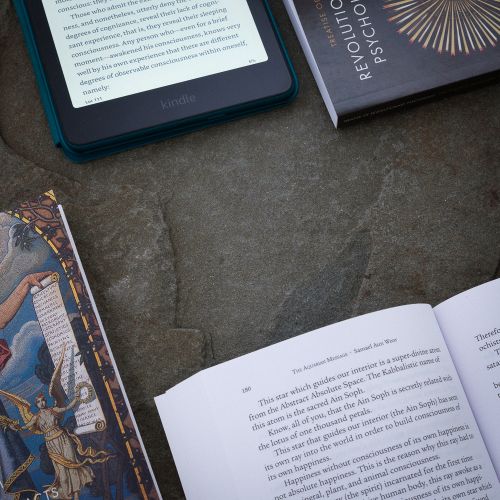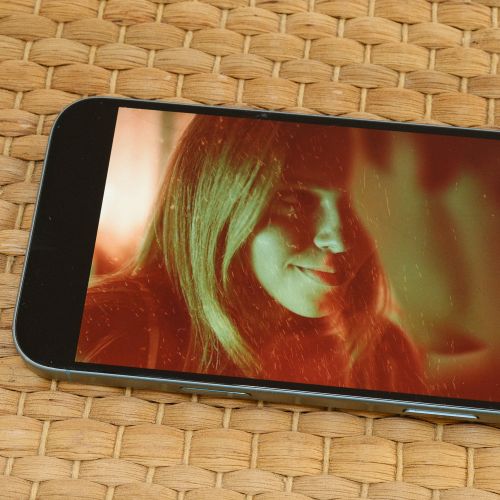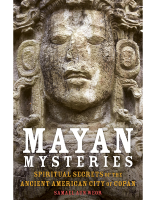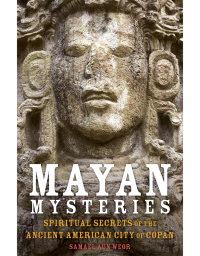This god is also call Tzinacan or Zotz, which means bat.
It is very well represented with a marvelous pectoral that symbolized the soul, the causal man, the true man, the real man.
Its upward pectoral—that rises until becoming connected with its ears—are indicating to us that the true man must learn how to listen to the Verb, the Word, the Logos. This figure tells us that it is a deity, an incarnated Verb.
Its gonads are very well formed, clearly indicating that power is found in sex. A face appears instead of the phallus, as if to remind us that the causal man is formed with the mercury (which is the metallic soul of the sacred sperm), that the true man is precisely the outcome of the sexual transmutation.
The bat god has powers over life and death. He stands upon a stone that, even when it is not cubic in its whole, nonetheless provides us understanding of the work needed to acquire the philosophical stone. The bat god is a deity, an angel of death who lives in the causal plane. We find him sketched upon stelas, codices and Mayan vessels, holding the livery of the god of the air.
The town of Tzinacatlan from Chiapas (Mexico) and the town of Tzinacantepec in the valley of Toluca are inhabited by the Tzoctziles (people of the bat) from the Mayan family.
In the Popol Vuh (the Mayan Bible) the bat is a great angel who descended from heaven to behead the first Mayan people who were made of wood. He is the same heavenly bat who (in the Popol Vuh) advised Ixbalanque and Hunab Ku what to do to become victorious in the ordeal within the cavern of the bat god.
The Nahua temples (in the form of a horse shoe) were dedicated to the cult of the bat god. His altars were made from pure gold and situated towards the East.
The Nahua masters invoked the bat god to ask him for healing their disciples or for the healing of their profane friends, since the bat god has powers over life and death.
Initiates were the only ones who could assist with this invocation. Within the interior part of the temple, a human chain was formed by alternating men and women, but without touching each other’s hands or bodies. On each side of the altar the ends of the chain started; all sat in a squatting position with their back towards the wall.
Fresh cut flowers were placed upon the altar and on each side, upon two small columns carved in basalt, there were full-size clay hearths painted in red, symbol of life and death. Logs of cypress (symbol of immortality) were burning within the clay hearths, whose aroma mixed with the smoke of copalli (copal), odorous resins and the powder of white seashells.
The master wore the livery of the god of air and maxtlatl around his waist. In front of the altar, he raised the extended palms of his hands and vocalized the mantra ISIS three times, dividing it into two syllables, as follows:
Iiiiiiiissssssssssssssss Iiiiiissssssssssssssssss
Afterwards with an obsidian knife, whose hilt was made from jade and gold, he blessed the assistants and performed the ritualistic invocation in silence: “Lord of life and death, I invoke thee so that thou can descend to heal all of our aches.”
There was an impotent silence that was only interrupted by the crackling of the hearths and then suddenly, the sound of flapping wings together with an aroma of roses and nards enveloped the temple. An elongated flame emerged from within the hearths as if wanting to touch the heavens and then the master and their assistants prostrated themselves until they placed their foreheads on the ground.
Then the bat god descended to the funerary ordeals of the Thirteenth Arcanum either wearing the livery of the god of air, or in the shape of an owl. The front entrances of the temples have thirteen steps; and the Ancient of Days has thirteen locks of hair on his head.
A circular temple dedicated to the sun existed within the precinct, where the Major Temple of Tenochtitlan was erected. The Tzinacalli (house of the bat) existed within the secret chambers of that temple of mysteries; it was a broad chamber, which looked like a somber cavern in which the rituals of initiation (to attain the higher degrees of Ocelotl-tiger Knight and Cuauhtli-eagle Knight) took place.
Upon the lintel of the small door (that was concealed within the interior background wall of the cavern and that gave access to the temple), there hung a great obsidian mirror and in front of that small door, a bonfire with pinewood burned on the floor.
The candidate for initiation was taken to the Tzinacalli where he was left alone during the very late hours of the night. He was told to walk within the obscurity towards the light of the bonfire and to then speak to the Guardian of the Threshold: “I am a child of the Great Light; darkness move away from me.”
The bats would then begin to screech and tumble through the air upon the head of the candidate. The pinewood fire slowly diminished until only the embers were left, whose glow was reflected upon the mirror.
Suddenly, emerging from within the gloom, with the sound of noisy flapping wings and a terrifying howl, a human shadow appeared who with bat wings and a maxtlatl around his waist struck with his heavy sword and threatened to decapitate the intrepid invader of his domain.
Woe to the candidate who withdrew in terror! In this case, a door that until then had remained hidden (camouflaged by the rock) opened silently and at the hinge post a strange person appeared, who then pointed towards the outside world of the profane from which the candidate had come.
Yet, if the candidate had enough courage present to dauntlessly resist the assault of Camazotz (the god of the bats), the small door (which was hidden in front of him) was opened softly and a master would approach the candidate. The master then revealed and incinerated the effigy (which was molded with amethyst paper and hidden within the shadows of the cavern) that had the likeness of the candidate. Meanwhile the other masters welcomed the candidate and invited him to enter the temple.
This ritual symbolizes the death of the passions from the personality of the initiate in his passing from the darkness into the light. In the ancient schools of Nahua mysteries, the animal souls of the candidates of initiation, who were submitted to the tests of this ordeal, were sometimes depicted as bats because, like the bat, their animal souls are blinded and deprived of their power because of the lack of the sun’s spiritual light.
As vampire bats, the depraved and the avaricious ones fly down upon their prey and afterwards go lazily back into the gloomy caverns of their senses, where they hide from the light of the day, as those who live within the darkness of ignorance, desperation and evil.
The world of ignorance is governed by fear, hate, greed, and lust. In it wander men and women who are only floating listlessly to and fro upon their passions.
Only when the human being comes into the realization of life’s spiritual verities does he then escape from this underworld, from that damned cavern of bats over which Camazotz (who sometimes even kills with his sole presence) lies in wait, hidden, for his victims. The sun of truth rises in the human being and illuminates his world when he lifts his mind from the darkness of ignorance and selfishness into the light of wisdom and altruism. The eyes of the eagle upon the tarsus feet of Coatlicue, which try to see towards the infinite, are a symbol of this state of consciousness in the human being.
Practice
We recommend that you choose a private place for your practices; a small desk or table, a white mantle over the table. A small wooden or metallic cross and the light of two lit candles made of wax or paraffin. Choose a Thursday from 9 to 10 p.m. or from 10 to 11 p.m.
During three days prior to the invocation of Camazotz, the bat god, whom you have to confront in order to successfully advance on the path, you must nourish yourself only with fruits, legumes, rye bread and milk. Do not be afraid to perform the invocation of Camazotz. The soul that is purified by love and sincere devotion to her internal God must not fear anything or anybody, but fear itself.
Keep this experience on the path of your life only for yourself.







